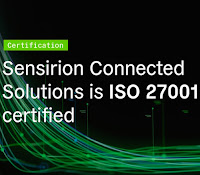A large 7” vivid multi-touch display, with an integrated controller and expandable I/O, enables handling more applications than ever before.
IDEC Corporation has expanded its SmartAXIS touch family with the new
FT2J Series combined PLC+HMI. A compact all-in-one form factor combines built-in full function controller features and functions, both onboard and expandable I/O, and an advanced technology 7” touchscreen display, providing many advantages for a wide variety of industries.
An all-in-one PLC+HMI is compact and consumes far less panel space than separate units. Because the PLC and HMI are internally connected, require only one power supply, and share the same network connection, installation is simplified. The FT2J is ready to use and communicate right out of the box, and end users perform configuration with an intuitive and easy-to-use integrated development environment for both PLC and HMI functions, cutting configuration and programming time.
The integrated PLC and HMI each have their own dedicated CPU and user memory for optimized scan time performance, and they communicate natively with each other. Built-in I/O includes 14 points of DC discrete inputs (5 of them configurable as high-speed counters), and 4 points of analog inputs (configurable as 0-10VDC or 4-20mA). A relay version provides 8 points of relay outputs, while transistor versions provide 6 points sinking or 6 points sourcing of discrete outputs (4 of them configurable as pulse outputs) and 2 points of 0-10VDC or 4-20mA analog outputs.
The FT2J supports up to two expansion cartridges of discrete or analog I/O, with a number of options offered including a 2-point RTD/thermocouple analog input version. All analog inputs and outputs are 12-bit resolution.
The HMI’s projected capacitive touch panel (PCAP) advanced technology—similar to what is used for smartphones and tablets—saves space and improves performance. Besides being water- and scratch-resistant, PCAP is responsive and provides a high tolerance to resist false signals when dirt or water droplets are present on the face of the HMI. Fewer layers and better light transmission ratings mean less backlight power is needed, and the display provides an industry-leading 500 cd/m² brightness level and 50,000-hour backlight life. A small bezel provides the greatest possible display area compared with the installation footprint, and the entire package requires only a shallow mounting depth clearance. In addition to being multi-touch, users can interact with the touch HMI while using thin gloves.
The glass-top design is wear resistant and delivers a long life, even in harsh environments. A battery-free design using a hyper-capacitor, and a long 50,000 hour rated backlight life, makes these units low maintenance. Ratings for extreme temperatures from -20 to 55˚C, IP66 and IP67 for wash-down areas, IP66F and IP67F for oil resistance, UL60101, UL Type 4X/12/13, and Class I Div 2 mean the FT2J PLC+HMI can be used in a wide range of applications and locations.
All PLC and HMI configuration is accessed through IDEC’s standard WindOI-NV4 software, which is easy-to-use and intuitive, with a drag-and-drop interface and extensive image library. Projects can automatically be converted from one HMI size to another within seconds. Script programming, PIDD loop control, multilingual capabilities, security, trend charts, data logs, alarm logs, and other functions and features are supported for both the
Two USB-A ports support flash drives for data logging, recipes, and program transfer—along with dongles for speakers, Wi-Fi, and Bluetooth. The embedded Ethernet port provides users with easy access for remote maintenance and communication as well as Modbus TCP protocols and other intelligent devices. The built-in RS232C and RS422/485 serial communication ports support Modbus RTU and also allow the FT2J to communicate to other serial devices like barcode readers or temperature controllers.
Many communication options are available for users to create automation and IIoT solutions incorporating multiple industrial protocols, the FTP protocol, remote monitoring and control, email/text messaging, iOS and Android apps, and custom web pages.
The IDEC FT2J 7” touchscreen PLC+HMI uses modern technologies, an optimal display size, and an efficiently sized form factor, making it the ideal solution for industrial applications that simply don’t have available space or I/O content to justify larger and more complex individual HMI and PLC installations. The FT2J is ideal for many laboratory, commercial, and industrial applications throughout industries like food and beverage, consumer packaged goods, oil and gas, and agriculture. Designers of test equipment, HVAC systems, pump controls, remote wells and booster stations, and other OEM machines and process skids are finding the FT2J to be the best fit as a control and visualization solution.
@IDECUSA #PAuto #HMI








































